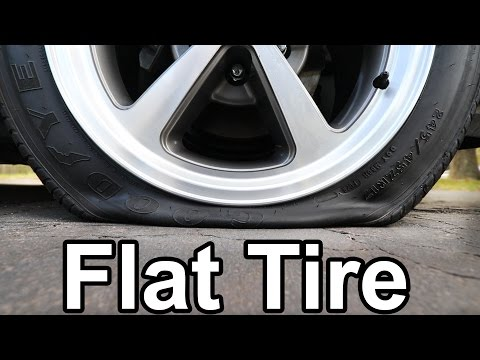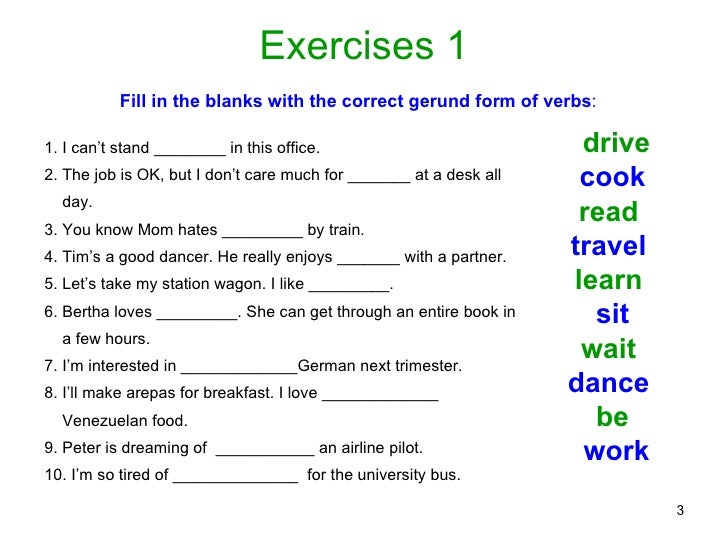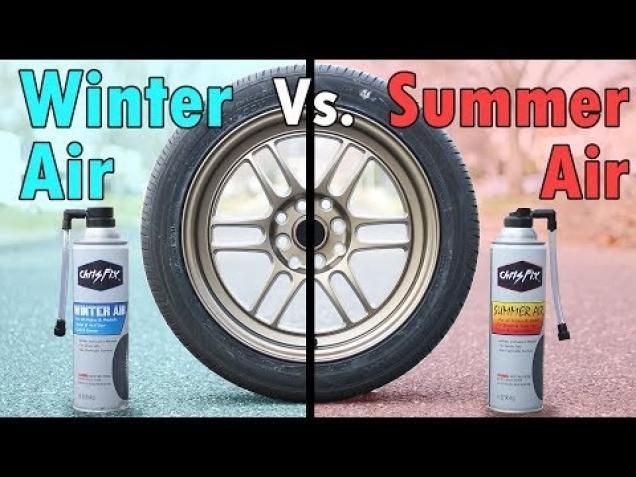We all know that routine maintenance is important for everything from our computers to our cars. But sometimes, we fall short. One of the most neglected routine car maintenance tasks is to check tire pressures and inflate them as necessary. That’s why newer cars have tire pressure warning lights, or tire pressure monitoring systems (TPMS), that let you know when you have under- or over-inflated tires (when any tire is 25% underinflated).
Older vehicles don’t have this useful warning light. So, don’t wait for a rupture to check or change a tire. Use this guide to learn how to check the pressure (PSI) of your vehicle tires and how to inflate them to the proper air level.
Why should you check your tire pressure?The number one reason why you should periodically check your tire pressure is SAFETY, but there are monetary and handling reasons as well:
Proper tire pressure (as recommended by the manufacturer) is needed to drive safely and efficiently. According to a 2009 report by the National Highway Traffic Safety Administration:
“…about 28% of light vehicles on our Nation’s roadways run with at least one underinflated tire. Only a few psi difference from vehicle manufacturer’s recommended tire inflation pressure can affect a vehicle’s handling and stopping distance. Poor tire maintenance can increase incidences of blowouts and tread separations. Similarly, underinflation negatively affects fuel economy.”
When your tires are underinflated, the tires get fatter, increasing their surface area. This causes high heat generation and extra resistance that could result in higher fuel costs, blown out tires, tire wear, and loss of control.
If you feel like you’re spending too much at the gas pump, it might be your tires. According to the US Department of Energy:
“You can improve your gas mileage by 0.6% on average—up to 3% in some cases—by keeping your tires inflated to the proper pressure.
Under-inflated tires can lower gas mileage by about 0.2% for every 1 psi drop in the average pressure of all tires.”
In addition to safety and fiscal concerns, keeping your tires properly inflated will also reduce your impact on the environment. When your tires are properly inflated, you’ll pay less for gas, replace your tires less often, and improve your handling and stopping distance. You’ll also feel better knowing that you are emitting less carbon dioxide and other harmful substances into the atmosphere.
What is the right PSI level?PSI stands for pounds per square inch. The recommended PSI for your vehicle’s tires is determined by the vehicle’s manufacturer and the recommended tire size.
One big question that we get is whether you should follow the recommended PSI level on the tire itself or the recommended PSI level printed in your owner’s manual or on the placard inside of door edge, glove box door, or fuel door.
Do NOT use the max PSI that is printed on the tire sidewall. This is not the recommended PSI level. The pressure amount on the tire is normally the maximum allowed pressure. The correct PSI level is almost always less than what you see printed on the side of the tire. Over-inflation can lead to poor handling and comfort, overheating and blow outs. Over 40 PSI is a dangerous level for most vehicles!
Make sure you always use the recommended PSI as provided in your owner’s manual and don’t go any more than 5 PSI over the recommended level. You should make sure, however, that your tires are appropriate for your vehicle. You can do this by checking the car’s owner’s manual or the placard that is on the inside of the driver-side door, glove box, or fuel door.
Most car tire pressure recommendations range from 30-35 PSI.
How often should I check tire pressure?A question in many minds is when is the appropriate time and frequency for checking and inflating vehicle tires.
A quick google search will reveal a variety of different opinions and suggestions. Some say that you should check your tire pressure every 2nd visit to the gasoline station, while others say once every 3-6 months is OK.
Most tire and vehicle manufacturers, on the other hand, will say that you should check your tire pressure at least once every month, or every second trip to the gas pump. Your tires will lose around 1 PSI each for every month that goes by.
Unfortunately, not one answer will fit every situation. There are several factors that influence how often you should check your tire pressure, including:
Did you know that for every 10°-drop in temperature, you lose 1 pound of pressure?
If you have a leaky valve or a small puncture, you will lose air pressure much more quickly. This is one more reason why you should frequently check the tire pressure on all of your tires.
Since tire pressure constantly fluctuates, it’s important to check it periodically (at least once a month) and add air as necessary.
How to Check Tire PressureFinding out the tire pressure of your tires is incredibly easy. All you need is a pressure gauge (click here for additional items you should have in your vehicle).
Just make sure that you are checking your tires when they are relatively cold. If you check your tire pressure after a long drive, you will get an inaccurate reading since heat will temporarily increase the tire pressure reading.
Unfortunately, not all pressures gauges are created equal. Some are better than others. We recommend shelling out a couple extra bucks for a digital reader. The pop-up, stick-type versions are notoriously inconsistent and unreliable. A reliable gauge will be well worth the investment. Prices range from about $5 for the stick-type and about $30 for the digital and dial-type pressure gauges.
You can also check your tire pressure at most gas stations or auto repair shops. Discount Tire offers free tire pressure checks and inflation.
Here are the steps for checking your tire pressure: Check the tire pressure again. Release more air if necessary. If you release too much air, you can always add some air back.
Check the tire pressure again. Release more air if necessary. If you release too much air, you can always add some air back.It should only take you a couple minutes to check the air pressure of your vehicle’s tires. As soon as you restore tire pressure to the recommended levels, you’ll start experiencing the safety and savings that come with this regular maintenance task.
Watch this video for more information on how to check your tire pressure:
How to Inflate TiresHere are the steps for adding air to your tires:
 Instead, go to your local gas station that has a coin-operated air pump (ask the attendant if you can’t find it). You can also purchase your own automatic air compressor, but it will cost you around $50-$150.
Instead, go to your local gas station that has a coin-operated air pump (ask the attendant if you can’t find it). You can also purchase your own automatic air compressor, but it will cost you around $50-$150. Hold it firmly against the valve as you listen to the air filling the tire.
Hold it firmly against the valve as you listen to the air filling the tire. You’ll want to screw them back on now.
You’ll want to screw them back on now.Remember, just one drop in PSI can lower your gas mileage by about 0.2%. For every 3-4 PSI units that your tire is underinflated, you are burning around 1% more fuel.
If your tires are flat, then you probably have a leak. Add air and see if you can drive around without the pressure dropping. If you hear air escaping the tire while you are filling up, then it’s time to replace the tire.
Tip: Learn how to use the air pump properly first. Some automatic air pumps at gas stations have a handle/switch that you need to depress in order for the air to flow. When you let go of the handle, a tire pressure gauge will pop out showing you the tire pressure. At the same time, air will be slowly released. If your air pump has this kind of handle, then you will want to hold down the handle for most of the time, periodically releasing it to check the pressure reading. Consult your own tire pressure gauge for accuracy.
When should I replace my tires?If you check your tire pressure at least once a month as recommended, you’ll also get a good idea of the general condition of your tires and when you should replace them.
We recommend using the penny test:
Source: bridgestonetire.com
Click here for more car maintenance tips. Click here for car winterization tips.
Auto Simple wants you to find a vehicle you love at a price you can afford. We carry a large selection of hand-picked, Certified Pre-Owned vehicles, all with a 6 month/6,000-mile Powertrain Warranty.
If you have any questions, don’t hesitate to speak with one of our Online Specialists or give us a call:
Chattanooga, TN – (423) 551-3600
Cleveland, TN – (423) 476-4600
Dayton, TN – (423) 775-4600
Dalton, GA – (706) 217-CARS (2277)
Follow us on social media for more useful information on buying, selling, and maintaining vehicles: Facebook, Twitter, Youtube, and Google+.
Your car's tires play many valuable roles in the safety and function of your vehicle — from helping you navigate twists, turns, and stops like a pro to carrying the full weight of your car. That's why it's important to pay special attention to these essential components.
Fortunately, maintaining the proper tire pressure on your vehicle is one of the easiest yet most effective ways to care for your car tires. Learn how to check air pressure and inflate your tires with this helpful guide.
Underinflated tires can not only reduce fuel efficiency, but it can also run the risk of getting into an accident, losing proper steering control, damaging various components of your vehicle, and more. If you notice that your tire's air pressure levels have dropped, it's best to prioritize inflating them as soon as possible.
Checking your vehicle's tire pressure is a relatively simple task. You'll want to start by purchasing a tire gauge. These vary in price depending on the type you choose (i.e., digital, basic, etc.) but can usually be found for well under $40. It's also essential to keep a tire gauge on hand, as some gas station air hose gauges are not always accurate. Many modern cars and trucks also display the tire pressure for each tire on the dashboard. Once you have your tire gauge in hand, it's time to determine the proper pressure for your vehicle.
You'll want to start by purchasing a tire gauge. These vary in price depending on the type you choose (i.e., digital, basic, etc.) but can usually be found for well under $40. It's also essential to keep a tire gauge on hand, as some gas station air hose gauges are not always accurate. Many modern cars and trucks also display the tire pressure for each tire on the dashboard. Once you have your tire gauge in hand, it's time to determine the proper pressure for your vehicle.
Find the correct inflation level. To do this, you can either look for the recommended pressure on the sticker within your driver's-side door jamb or consult your car owner’s manual. This is the tire pressure specification when the tires are cold, meaning not driven for a few hours.
Remove the valve stem cap from your tire. Some cars and trucks have green valve stem caps with an “N” on them - this means the tire is filled with nitrogen instead of air (air is mostly nitrogen). If your tires have these green valve stem caps, you can find some special stations that dispense nitrogen, but be aware that you can use normal air as well. The inflation pressure specifications are the same regardless if the tire is filled with air versus nitrogen.
The inflation pressure specifications are the same regardless if the tire is filled with air versus nitrogen.
Connect your air pressure gauge to the tire’s valve stem until you receive a reading.
If the pressure level number seems unrealistic, remove the gauge and try again. This time, ensure that the indicator is connected firmly to the valve stem.
It's not always possible to tell if a tire is underinflated by giving it a quick once over. So, check your PSI levels with a gauge each month and after extreme temperature changes. You'll also want to check your pressure levels when your tires have had time to cool down since air expands within your tires while driving.
Filling your tires with air at a gas station is relatively simple. Bring your tire gauge and some spare change since some are coin-operated and are not always accurate in their pressure readings. Try to make this the first stop if you are running errands so that your tires are still relatively cool from sitting for a few hours. Then, follow these steps:
Then, follow these steps:

Can't find an air filling station near you or just want some help? Head to your local Firestone Complete Auto Care. We'll give you a free tire inspection and refill your tires free of charge. And if you need new tires, we've got you covered there too!
Car tire is responsible for driving safety and comfort. It needs to be kept in working order. This is a prerequisite for long and safe operation. Not all drivers know how to pump up a wheel, we will analyze the nuances of this work in more detail.
Not all drivers know how to pump up a wheel, we will analyze the nuances of this work in more detail.
Tire pressure is an important parameter, it is he who is responsible for the main technical characteristics of the wheel. The car manufacturer calculates this parameter in advance and indicates it in the recommendations.
If a tire is underinflated, this will lead to increased fuel consumption in the first place. This is due to a decrease in the rolling coefficient. Uneven traction with the road surface also occurs, leading to a decrease in traffic safety, this is felt in the form of more difficult driving. Tire wear increases, with a strong drop in pressure, the rim of the disc can cut the sidewall.
It is also not worth pumping tires. The tire will wear unevenly, the middle part of the tread will suffer. Increased pressure can provoke an explosion and complete destruction of the tire on the road. In addition, the rigidity of the wheel will increase, and the braking efficiency will decrease.
In addition, the rigidity of the wheel will increase, and the braking efficiency will decrease.
Pressure checks must be carried out at least once a month. If there are sudden changes in temperature outside, it is necessary to check the parameter every two weeks. Be sure to check the pressure before every long trip.
Visually inspect tires in the morning. If there are doubts about the quality of the pump, it is worth checking the pressure, if necessary, pump up the tire. Checking and pumping should be carried out on all wheels, different tire pressures can lead to loss of vehicle controllability.
Be sure to check the condition of the spare wheel.
Tire pressure is determined by the car manufacturer, he finds out through tests to what extent the rubber can be inflated. The data must be indicated in the documents for the vehicle.
For greater simplicity, additionally indicate the parameters on the plate. It can be found on the A-pillar of the car or on the inside of the gas filler flap. In rare cases, a plate with the main technical parameters may be on the door. It remains to find a plate on your car and see to what pressure to pump tires.
There are certain pumping rules. They include not only data on how much air to pump into the tire, but also when to do it. The main requirement is to inflate the tire only after a long parking. The tire heats up while driving. According to physical laws, temperature directly affects gas pressure. Accordingly, immediately after the stop, the indicator will not be accurate.
It is necessary to wait until the temperature of the air in the tire is equal to the outside. It takes 3-4 hours for this. After waiting so long, you can accurately measure the pressure. It is most convenient to do pressure measurement and pumping in the morning, after overnight parking.
Inflating a car tire is not difficult, but a beginner may have a few questions. We will analyze the stages of the process, in the end you will know how to properly pump up the wheel. To work, you will need a pump, you can use a foot or compressor. Now there are compressors that run on the cigarette lighter. If the pump does not have a pressure gauge, this device will also be needed.
Let's walk through how to inflate a tubeless tire step by step.
 To do this, the tip is simply put on the nipple, at the beginning you will hear the sound of escaping air. This is fine. Insert the tip completely.
To do this, the tip is simply put on the nipple, at the beginning you will hear the sound of escaping air. This is fine. Insert the tip completely.
Further, all the described procedures are repeated on the remaining wheels, including the spare. Now the car is ready to drive.
If the pump is foot operated, all steps are the same, except for the power connection. The air supply is carried out by setting the pump piston in motion, this is done with the foot.
Inflating a car tire is a simple job. This can be done by every car owner, even with no experience at all. The main thing is to know the basic rules, they are simple, it will not be difficult to fulfill them. But save time on a trip to a car service.
The main thing is to know the basic rules, they are simple, it will not be difficult to fulfill them. But save time on a trip to a car service.
Sometimes car enthusiasts ask experts whether it is better to inflate tires: air or nitrogen. Well, let's try to figure out whether there is a real need to replace air with nitrogen, to spend additional money and time on this. And in general - will any changes be noticeable after performing such a procedure.
Tire service managers claim that nitrogen in tires can significantly improve their performance. Namely, it slows down the aging of tires, stabilizes the pressure, and reduces the risk of explosion.
Consider separately each of these statements. Let's start with pressure stabilization . To understand this issue, let's remember physics. The air that we traditionally pump into tires consists of nitrogen (78%) and oxygen (21%) That is, with traditional inflation, almost 80% of nitrogen is already in the tires. In technical nitrogen, which is proposed to be pumped at the tire fitting nitrogen 95%, and oxygen 5%. Therefore, the thesis of a "substantial" improvement is doubtful. After all, the difference in nitrogen content is only 17%. In addition, the statement - “tire pressure is stabilized due to the fact that the coefficient of thermal expansion of nitrogen is lower than that of oxygen. This means that when the tire is heated, the pressure in it remains stable ”is simply contrary to physics. Charles's law states that the pressure of a gas in a closed volume is directly proportional to the temperature, while Gay-Lussac's law states that the volumetric expansion coefficient of all gases is the same. In other words, the replacement of air with industrial nitrogen does not affect the pressure stabilization in any way.
In technical nitrogen, which is proposed to be pumped at the tire fitting nitrogen 95%, and oxygen 5%. Therefore, the thesis of a "substantial" improvement is doubtful. After all, the difference in nitrogen content is only 17%. In addition, the statement - “tire pressure is stabilized due to the fact that the coefficient of thermal expansion of nitrogen is lower than that of oxygen. This means that when the tire is heated, the pressure in it remains stable ”is simply contrary to physics. Charles's law states that the pressure of a gas in a closed volume is directly proportional to the temperature, while Gay-Lussac's law states that the volumetric expansion coefficient of all gases is the same. In other words, the replacement of air with industrial nitrogen does not affect the pressure stabilization in any way.
If you are told that you can check the pressure three times less often when the tires are inflated with nitrogen, because nitrogen has less leakage, this is just a little slyness. Modern tires (tubeless), if serviced, can store air without leaks for many years. And if the tires are not tight, then neither nitrogen nor any other gas will fix the situation. Tire pressure should be checked regularly!
Modern tires (tubeless), if serviced, can store air without leaks for many years. And if the tires are not tight, then neither nitrogen nor any other gas will fix the situation. Tire pressure should be checked regularly!
Now we turn to the following statement - nitrogen increases explosion safety . Tires and so do not explode in the traditional sense of the word. For one reason or another, they burst, and then the pressure drops sharply, but the explosion does not occur. In Formula 1, tires are indeed filled with nitrogen, but solely for the sake of fire safety. For domestic (ordinary) use of the car, such enhanced fire safety measures are not required.
And finally, consider the argument that thanks to nitrogen, slows down the aging of tires, and car rims are less corroded. It also has a certain amount of slyness. Tires and disks age and corrode most of all and, first of all, not from the inside, but from the outside.